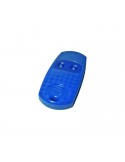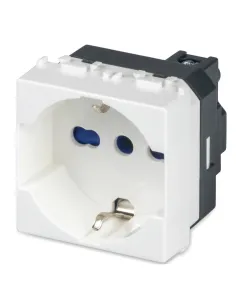- HOW TO DO
- 0 likes
- 41794 views
- 0 comments

Are you looking for information on the Schuko socket or the normal socket and wondering which is the best option for you? You are in the right place! In this article, we will discuss the differences between the two and help you choose the best one for your needs.
Schuko electrical sockets: how to recognize it and what is it?
Definition of Electrical Socket
An electrical socket is a device that allows you to connect electronic equipment to the electrical network of a building. There are different types of electrical sockets, including the Schuko socket and the normal socket.
Types of Electrical Sockets
Here are some of the most common types of electrical outlets:
- Schuko or F-type socket
- Normal or L-type socket
- American or type B socket
- English or G-type socket
Comparison between Schuko socket and Normal socket
Schuko socket
- The Schuko socket , also known as type F socket, is very common in Europe. It has two round contacts and a grounding system compliant with European regulations. It is safe, reliable and can handle electrical appliances up to 16 amps.
Normal grip
- The normal socket, or L-type socket, is a standard type in Italy. It has two flat contacts and one round contact for grounding. It can usually handle currents of up to 10 amps, although 16 amp versions exist.
Domestic sockets and electricity in Italy
Domestic sockets in Italy differ in their ability to support different current levels. Specifically, the maximum current ratings for sockets in Italy are 10A and 16A . This may vary depending on the type of socket used, which can be a standard socket or a Schuko socket. Despite these differences at a national level, at a European level there is still no unified legislation regulating the installation of sockets.
This means that an Italian plug can be inserted into a French or Swiss socket only if the central earth contact is missing.
On the other hand, the British system of sockets and plugs is incompatible with that of all other European countries. Particularly distinctive is the Schuko socket, also known as the "German socket" due to its German origin. This socket has side contacts for grounding and a lip that prevents any contact with the plugs when inserting the plug.
So, when it comes to sockets and power levels in Italy, it is important to know the specific national regulations and understand how they may differ from those in other European countries.
Why choose the Schuko socket: what are the advantages?
The significant plus of the Schuko socket is safety: the live parts are well protected, facilitating the connection of household appliances, garden tools and for slow charging of electric cars. This peculiarity has made the Schuko, known internationally as the CEE7/4 socket, popular in many European countries.
The use of the Schuko socket in household appliances
The Schuko socket has become the default standard for numerous small and large household appliances thanks to its compatibility with the corresponding plug which has become the typical solution for these devices. The Schuko socket has two lateral contacts for earthing, and the design of its edge prevents contact with the pins when inserting the plug. The CEI 64-8 standard recommends the use of this type of socket in the kitchen and for the washing machine, thus eliminating the need for adapters.
Types of electrical sockets common in Italy: from P10 to double-step
In Italy, three variants of electrical sockets dominate the market - the P10, the P11 and the double-pitch or bivalent P17/11 socket.
- Electrical socket type P10
- P11 high support electrical socket
- Double multipurpose P17/11 or Bipass/Bivalent electrical socket
The iconic Italian P10 socket is capable of managing a maximum current of 10A , and an energy power that reaches a maximum of 2200W . Its counterpart, the P11 socket , although similar to the P10, boasts a maximum current capacity of 16A and a power output of 3500W.
The P17/11 socket , also known as double-pass or bivalent , is the preferred choice for the construction of civil electrical systems. Its versatile design accommodates plugs of both the same currents (the small plugs at 10A and the large ones at 16A).
The choice between a Schuko socket or a normal one: which one to install in a civil electrical system?
In the context of a civil electrical system, the choice of the type of socket can be decisive.
It is therefore worth asking yourself the question: which, between the Schuko socket or the normal one, is more suitable? The general rule suggests opting for the installation of Schuko sockets to power larger appliances , such as refrigerators, washing machines, dishwashers, ovens and dryers.
These devices, in fact, absorb a greater amount of energy than other devices such as computers or portable lamps. For the latter, a two-step or bivalent socket, according to the most used terms, should be more than sufficient.










Comments (0)